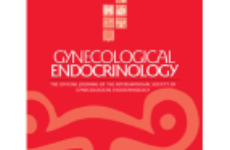 Controlled ovarian stimulation (COH) in PCOS is a challenge for fertility expert both ovarian hyperstimulation syndrome (OHSS) and oocytes immaturity are the two major complication. Ovarian response to COH vary widely among POCS patients and while some patients are more likely to show resistance to COH, other experienced an exaggerated response.
Controlled ovarian stimulation (COH) in PCOS is a challenge for fertility expert both ovarian hyperstimulation syndrome (OHSS) and oocytes immaturity are the two major complication. Ovarian response to COH vary widely among POCS patients and while some patients are more likely to show resistance to COH, other experienced an exaggerated response.
The aim of our study is to investigate a possible correlation between PCOS phenotypes and the variety of ovarian response to COH and ART outcomes in patients with different PCOS phenotypes. We retrospectively analyzed a total of 71 cycles performed in 44 PCOS infertile patients attending ART at Centre of Infertility and Assisted Reproduction of Pisa University between January 2013 and January 2016.
Patientsundergoing IVF with GnRH-antagonist protocol and 150−225 UI/days of recombinant FSH; triggering was carried out using 250 mg of recombinant hCG or a GnRH analogous on the basis of the risk to OHSS. We observed that Phenotype B had a tendency to have a greater doses of gonadotropins used respect to all phenotypes. Phenotype A group showed a greater serum estrogen levels compared to all phenotypes groups, a greater number of follicles of diameter between 8−12 mm found by ultrasound on the day of triggering and a greater mean number of freeze embryo.
Additionally serum AMH and antral follicles count (AFC) follow the same trend in the different phenotypes ad they were significantly higher in phenotype A and in phenotype D. In conclusion this study shows that the features of PCOS phenotypes reflect the variety of ovarian response to COH as well as the risks to develop OHSS. Serum AMH and AFC are related to the degree of ovulatory dysfunction making these ‘added values' in identifying the different PCOS phenotypes.
Phenotype A seems to be the phenotype with the higher risk to develop OHSS and the use of GnRH as a trigger seems to improve oocyte quality. To classify PCOS phenotype at diagnosis might help clinicians to identify patients at greater risk of OHSS, customize therapy and subsequently plan the trigger agent.
Vito Cela, Maria Elena Rosa Obino, Ylenia Alberga,Sara Pinelli, Claudia Sergiampietri, Elena Casarosa
Gynecological Endocrinology, Volume 34, 2018 — Issue 6
DOI: https://doi.org/10.1080/9 513 590.2017.1 412 429













